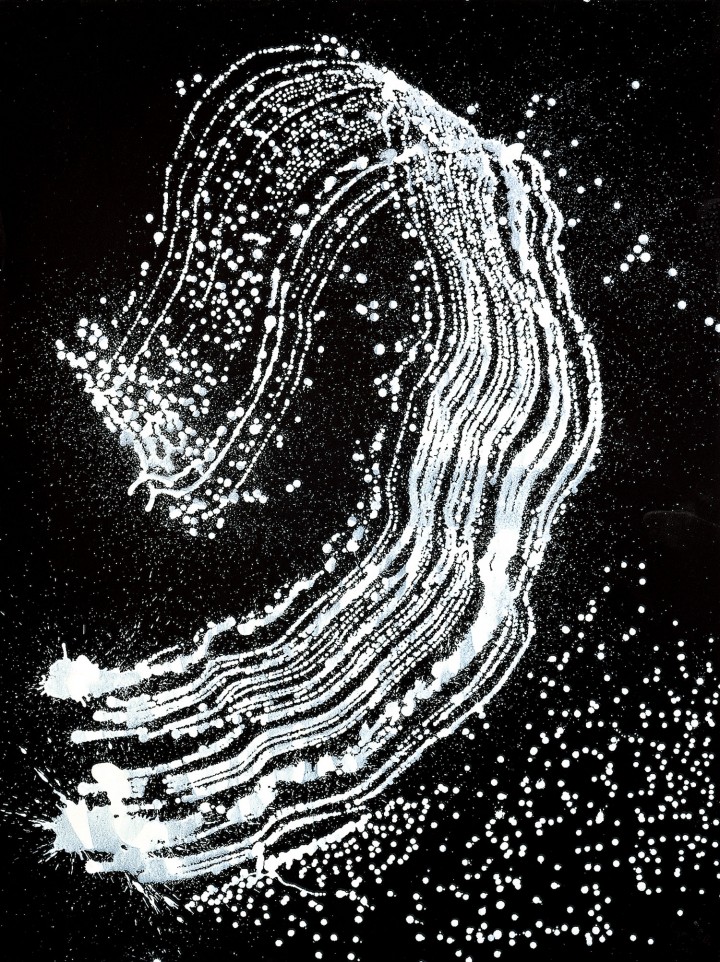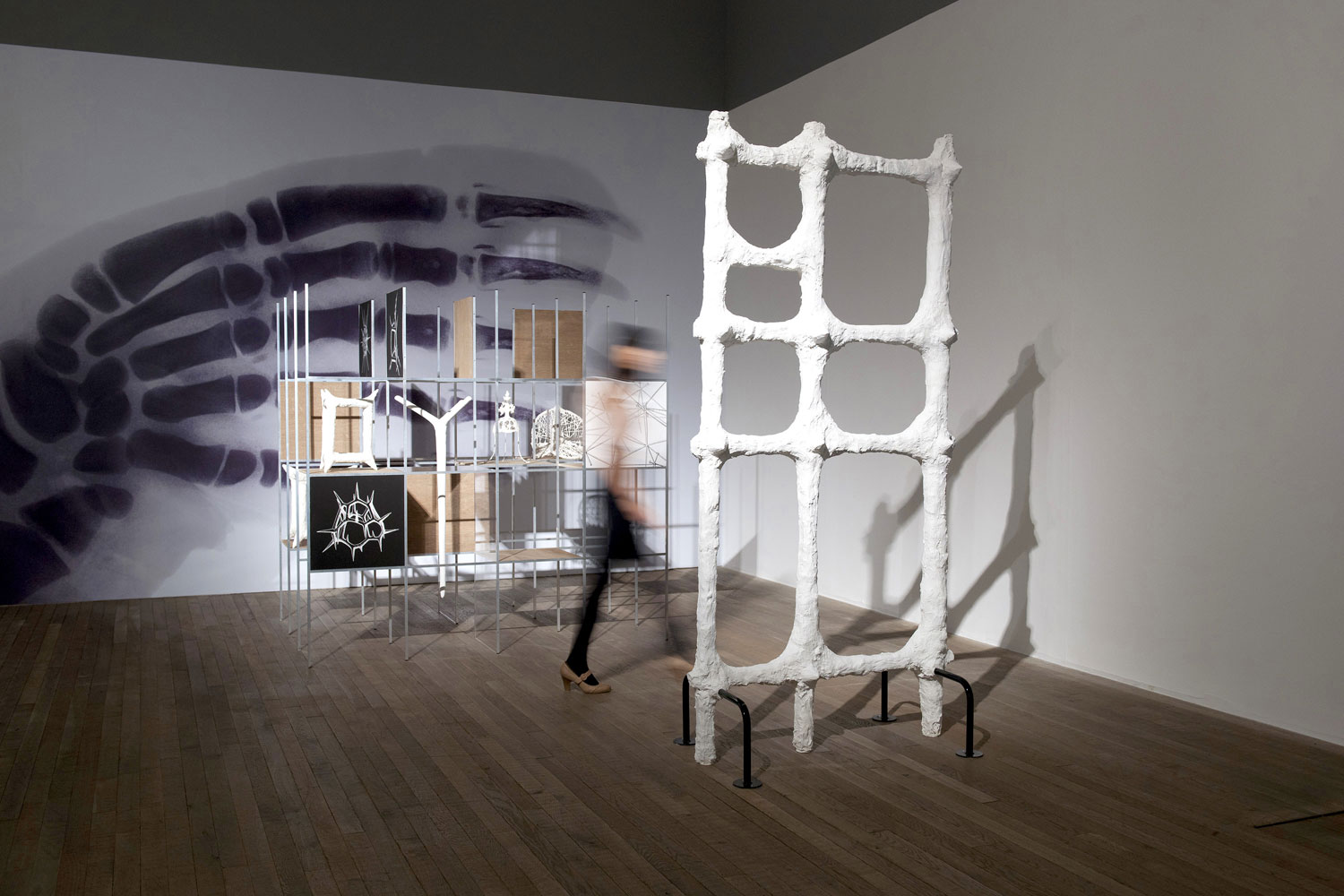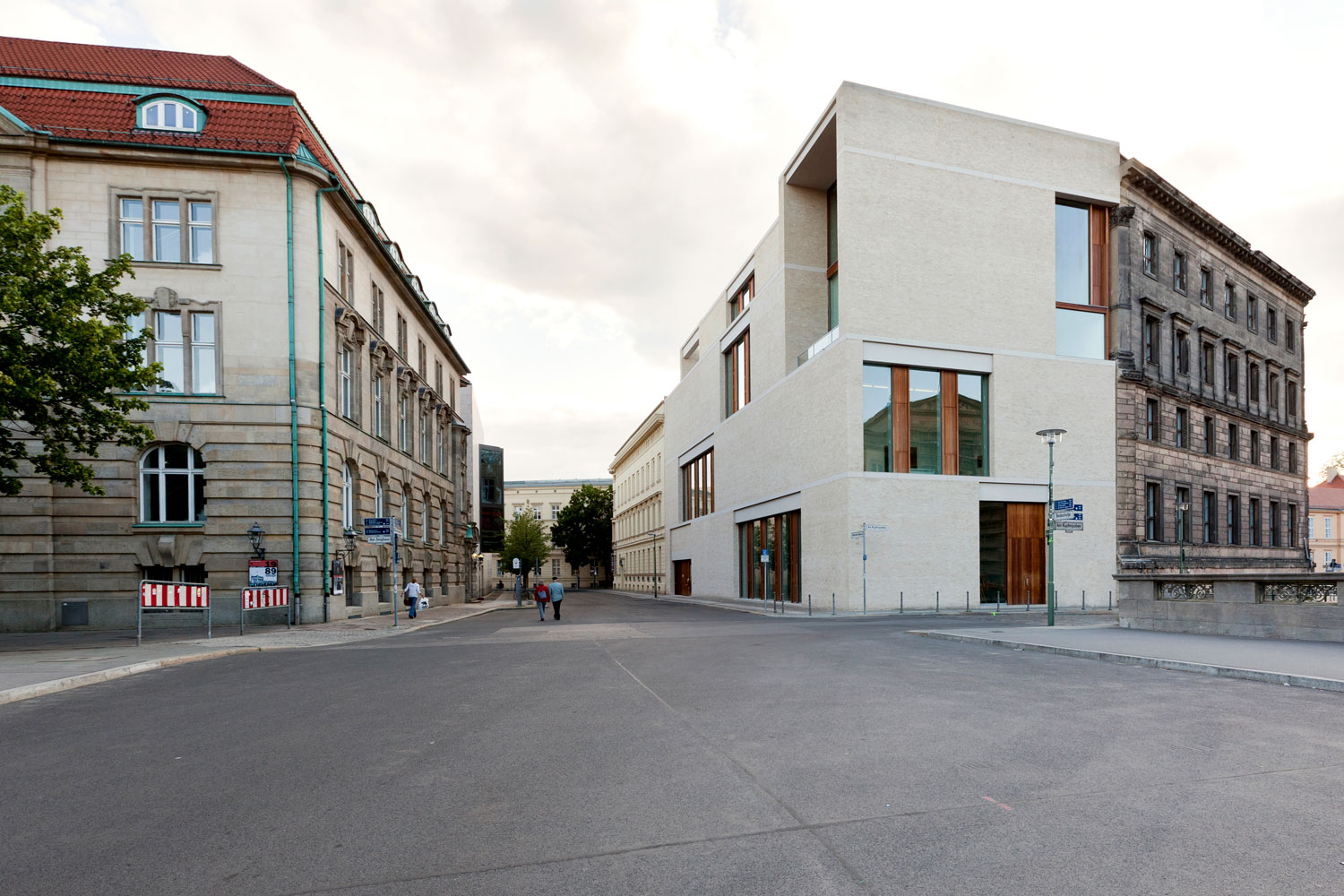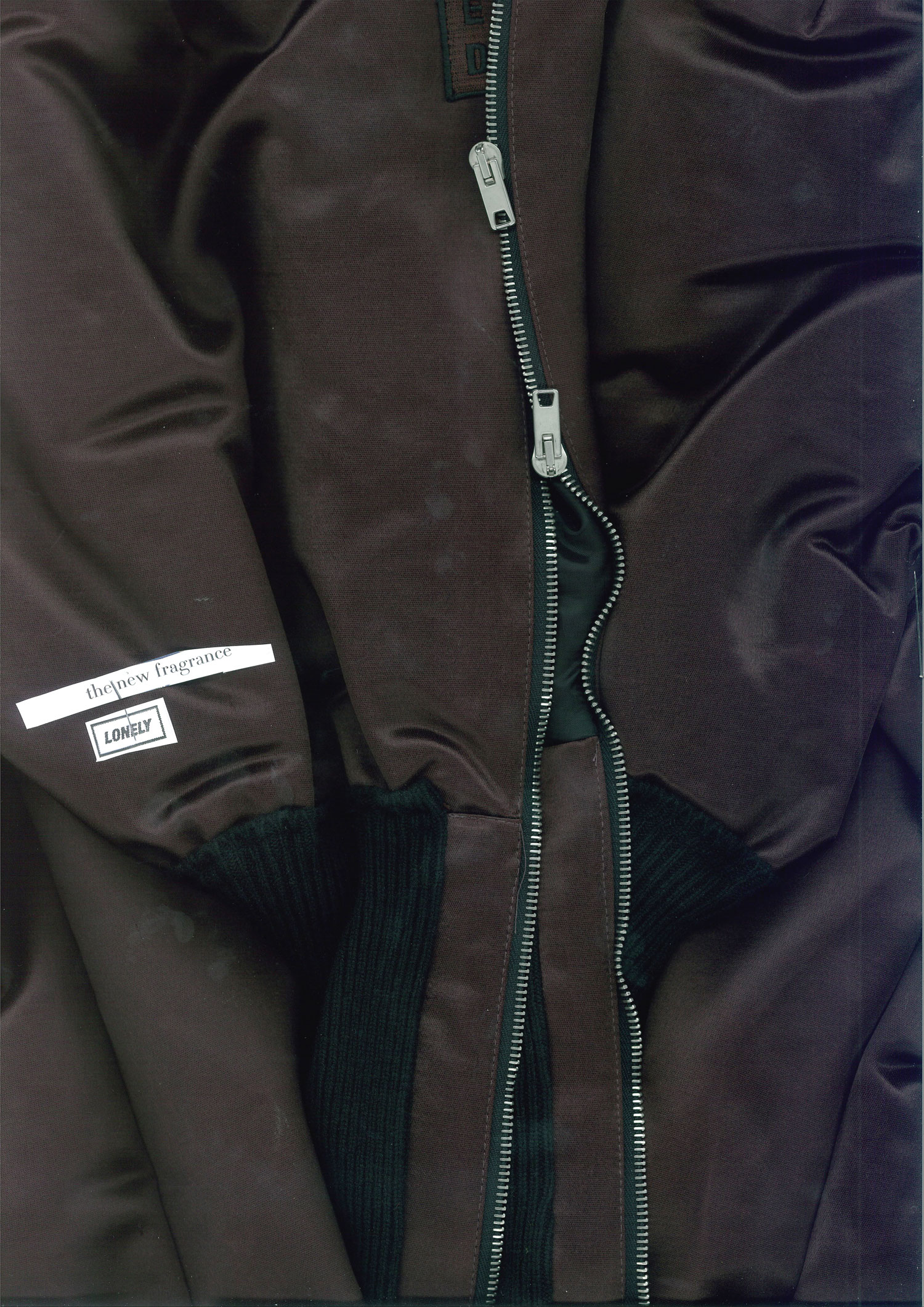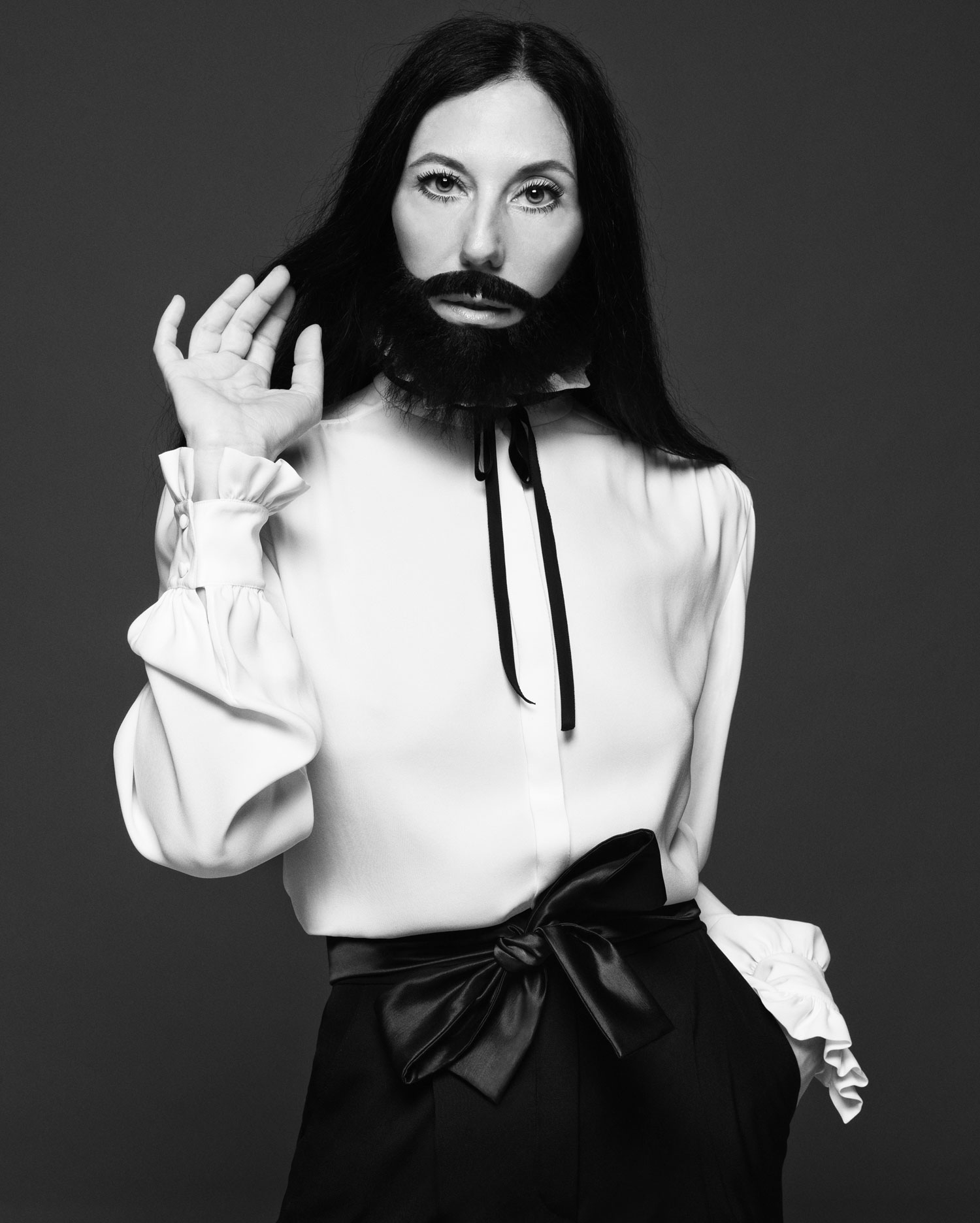
Tourist
by Dave Miko
In the past let’s tear this magazine up and go eat lunch. We’ll photograph some tourists eating tempura roll with salmon, avocado, wasabi cream cheese and chipotle sauce. After all, isn’t this varied mix of ingredients and the communities we ascribe them to titillating? It’s confounding, no? It’s delicious, yes? Wait! Let’s peel off this movie poster for The Bourne Supremacy. There is the debris of the street stuck to its adhesive: paint, sodium chloride, dust and hair. We will file it away later. Pull it out much later and frame it. Wait, you did save the torn up magazine scraps, no? We’ll collect tidbits like breadcrumbs, leaving a path by our course of removal. We’ll hoard information in protection against our own fable-ization. I am very thirsty. Let’s sit; we will have a laugh. Two tables for one please, near each other. Oh good, we can sit near this critic and ignore him. Let’s talk loudly about the far right and give him goose bumps. Look at his goose bumps, ha! Look now, wonderful, here come his colleagues, we’ll greet them ceremoniously. I’m full. They think me similar to these younger contemporaries. They think materials, or layout, or location, or apparent social proximity, or chronology, are ways of positioning and identifying. Dim. Parallels drawn by these criteria are subject to too many variables in amount and influence. What one is left with is like a verbal description of a photo of a mushroom cloud and trying to get a sense of the cloud’s taste. A cocktail made from blended words instead of blended spirits. For instance, if we look elsewhere to Walter De Maria’s Cricket Music (1964), Jess’s Ex. 1 – Laying A Standard: Translation #1, (1959), Richard Artschwager’s Woman with a Ball, (1962), Paul Thek’s Untitled (Standing Dwarf), (1969–70), Kim Jones’s Janson’s Art History, (1974–75), Bruce Conner’s A Movie, (1958), Thomas Chimes’s Geometry Love, (1966–69), Walter Marchetti’s The Bird of Paradise, (1977), Ed Emshwiller’s Scape-Mates, (1972), Robert Smithson’s Untitled (Ben Franklin and Indian), (1963), and Dean Stockwell’s Smith, (1958), we may find anomalous affinities or perhaps we will find predictable dead ends depending on our predilections and taste. As you have read, I wasn’t even born in Germany. Biography is a lie. Styles are costumes to be mixed and matched exclusively in the service of whim.
I am full and this restaurant is boring. The fanfare that surrounds this party, tedious. Let’s form a retreat, a tweaked paradise. In such a place beyond convention we can find an interval previously unheard. What lies between the augmented fourth and the diminished fifth? Perhaps there is some valley there with a river and a group of cottages. We can join together in whichever activities appeal at any given moment, in as many or few partners as we like. Ever-shifting like the center of gravity of an uncooked egg. That was fun for a while, but I think I’d prefer a trip to Congo; shall we go together and bring a camera? No, I think I’ll go over to the law offices and play with the copy machine. An exhibition? Yes.
In 2005, while passing through Zurich, I happened to see “Sigmar Polke: Works & Days”at Kunsthaus Zürich. While I had previously come to an appreciation of what I imagined to be a slippery, large body of work, with compelling and varied single moments, until visiting this show I had not seen pieces as spooky in tone and with such unfamiliar beauty. I walked away thinking that Polke had an extraordinary visual sensitivity to the objects before him. An ability to see beyond the names of things or their significations to the exact specificity of their iterations and the potential plastic relationships they might engender through further looking or the addition of further elements. Also on view at the museum was the exhibition “Pieter Claesz – Still Lives in the Golden Age.” I enjoyed that exhibition as well and bought a book of reproductions of it to take back to New York.
The Glass Before The Painting
by Kerstin Brätsch
A mystic token deeply graved is beaming
Within the glowing crimson of the stone,
Like to a heart, that, lost in pleasant dreaming,
Keep the image of the fair unknown.
A thousand sparks around the gem are streaming,
A softened radiance in the heart is thrown;
From that, the light’s indwelling essence darts.
But ah, will this too have the heart of hearts?
[Novalis, Henry of Ofterdingen, 1799–1800]
/
The glass before the painting
Achat
Adlerstein
Alabaster
A delay, a sample, a screen
Allerseelenzauber
aus d. Ameisenhaufen
World of touch / Touch-screen
Amethyst
Anaël
Mausoleum of Galla Placidia, Ravenna
Augenstein
The 2nd quasi: sunrise to sunset
Bachstelzenstein
Backstein
Badestein
(Stein) im Barsch-Kopf
Detour painting: from top view to phantom view
Beichte vor dem Stein
Lapis philosophorum
To turn lead into gold
Bewegung des Steins
Did you ever fear that Magica de Spell would steal Uncle Scrooge’s Number One Dime and melt it at the bottom of Mount Vesuvius? (Gundel Gaukeley vs. Donald Duck)
Blasenstein
Blauer Stein
Blendstein
Blindstein
The glass before the painting
Men started a fire by the sea and discovered glass by accidentally melting sand
Blitzsteine
Bring the glass back to the sea
Blutender Stein – Blutstein
A volcano is made of glass (lava)
Bonifantiuspfennig
Brunhildenstein
Stein in’s Butterfaß legen
Stein aus der Dachtraufe
The top of the Fuji Mountain
Also: walking on Pele’s hair…
Dermastein
…Pele the goddess of Hawaiian volcanoes
Denkstein
Diamant
Donnerkeil
Pele’s hair (volcanic glass)
Donnerstein – Drachenstein
To fold oneself back on itself, or to fold it forward
Druidenstein
To negate its being or to bring its being to a higher power
Stein zum Durchkriechen
Echenit – Edelstein – Eidsteine
To spell out one’s own name / To cast a spell on / The new spelling
Stein aus dem Elsternest
Entstehung d. Menschen
Hammer of witches
Ernststein
The glass before the painting
A study of the quasi
erweichender Stein
Recall painting, pre-state painting, flexible positions
Stein im Esels-Kopf
Eulenmutter – Stein aus dem Eulennest
Rubber Man
Externsteine
Glass: immateriality (light) and matter (shadow)
Steine mit Fett einreiben
To build the world, to rebuild the world
Findlingstein
Fledermaus-Stein
Fossilien
You created a paradox:
luminous walls of stone
Stein auf den Friedhof werfen
Eye Energy Darkness
Fürstenstein- in der Futterkrippe
Frozen painting
Gagat
Galaktit
Galitzenstein
Frozen the Ether into an object
Shock freeze
von Geistern geworfen
Geistersteine
False space vs. spacelessness
Gemsenstein
Geschoss des Alps
Glücksstein
The baseline (past) / The fold (present) / The inconnu (future)
glühender Stein
Gott als Stein
Grabstein
Sliced agate: blood picture of an agate stone
Granat
The glass before the painting
Painter, the brush testing
Handabdruck des Suitbert
Painting stress test
Stein im Hecht Kopf
Handmade seriality
heiliger Stein
(Liminality)
Glass as a state of inbetweeness
Stein für Heilzauber
Premonition
Herrgottstein
Hexenstein
Tempesta solare
hinsetzen mit entblösstem Hintern
Hirtensteine
LED / LEAD
Am Hölleneingang
Irrstein
Johannishaupt
Judenstein
Kapaun
Karfunkelstein
Golem
im Karpfen Kopf
Käsestein
im Kaulbarsch Kopf
The glass before the painting
The inconceivable idea of the sun
(cf. being in the right light)
Kieselstein
Kinderstein
Kobalt
Attempting exactitude:
“Why couldn’t there be, in some way, a new science for every object? A mathesis singularis and no longer universalis.”
[Italo Calvino, Six Memos for the Next Millennium. The Charles Eliot Norton Lectures 1985–86, New York: Vintage International, 1993]
Stein für das Kohlfeld
Stein gegen Kopfschmerz
To cast a damning light on painting
Krallenhand auf dem Stein
Poussin on Caravaggio: “to destroy painting”
Krebsstein
Kreuzstein
Kristall
Die Leibhaftigkeit Der Malerei / La Peinture incarnée
Krötenstein
Kuhstein
Augenaufschläge Gesichtshöhlungen Fratzen
Lasurstein
Liebeszauber
purity / double identity / the eyes / two equal points of view
[Stéphane Mallarmé, A Tomb for Anatole, 1961]
Magnetstein
Kristallmenschen
Malachit
Stein der Maria Magdalena
Marienglas
Crystal painting
Mäusezauber
Crystal meth painting
im Meerbersig Kopf
aus dem Meerraben Kopf
Meerschattenstein
Hospital for painting
Megalitbauten
A sculpted brushstroke, a glass brushstroke, brushstrokes not only as a signature but as placeholder
Meineidzauber
“An active reaction to painting from the inside out, starting with the fundamental building block. First tool: the primordial brushstroke. And even before that: optic foundation. Pre–painting: light rays. Refraction, surface transmission.”
[Allison Katz, What’s at Hand?, lecture delivered by Kerstin Brätsch at Rutgers University, 2014]
Meteor
Milchschadenzauber
I play:
Study of the eye
Staring into the sun and blinding
After image
Mondstein
Friends / mysterious finger / shown / appeared / chasing away / the false
[Stéphane Mallarmé, A Tomb for Anatole, 1961]
Mühlstein
Mund der Wahrheit
Extending consistency:
“Then it rained down into the high fantasy… fantasy is a place where it rains.”
[Italo Calvino, Six Memos For the Next Millennium. The Charles Eliot Norton Lectures 1985–86, New York: Vintage International, 1993]
Stein für das Nachtfräulein
Stein gegen Nasenbluten
Negation; build a still life with bowls of stones
Stein auf dem Obstbaum legen
You said: “God made the earth in small circles.”
Ofen/ Onyx / Opal
As well as: “ich bin auch ein Punkt.”
Opferstein
Speculative materialization
Pierre du mariage
All sisters!
Quarz
Rabenstein
Mutation
roter Stein / Rubin
The moon! The sun! The universe!
Sandstein
Prima materia
Saphir
Stained glass: It is hard even to see.
Our eyes are used to light falling on objects, not to shining through them.
Schlangenstein
Posing visibility:
“The only hero able to cut off Medusa’s head is Perseus, who flies with winged sandals; Perseus, who does not turn his gaze upon the face of the Gorgon but only upon her image reflected in his bronze shield.”
[Italo Calvino, Six Memos For the Next Millennium. The Charles Eliot Norton Lectures 1985–86, New York: Vintage International, 1993]
Schreckstein
Stein in der Schürze tragen
Schwarzer Stein
Hirnbild = Brain Image
seufzender Stein
Serpentin
Smaragd
Speiseopfer auf Stein
Spinnenstein
The matter of agate = geological age
Sprechender Stein
Agate chemical coloring = current age
spucken auf den Stein
This is a site with history!
Stahl und Stein
“vom Stein singen”
Steinopfer
Painting (overexposure)
Tau vom Stein
The secret diary of Laura Palmer
Teufelsstein
Topas
Topos as a place, not a location but an origin
Tropfsteine
Umdrehen den Stein zum Neujahr
Sliced agate like UR sampling /split / great axis of time
Veilchenstein
Verwandlung in Stein
Brushstroke as candy / brushstroke as dung
Wasser aus dem Stein herausbeten
Weichwerden des Steines
Weihrauchstein
You said: “A negative is never finished.”
Stein der Weisen
Sigi’s Erben (Agate Psychics)
für Windzauber
Wunderstein
Stein aus dem Zaunkönigsnest
Nachträglichkeit / When something is dragged into the presence
Ziegelstein
“They ride to the sun, and first bring the Day, then the Night; then to the North, for Winter, then to the South, to find Summer; from the East they bring the Spring, from the West the Autumn. Then they hasten after Youth, next to Age, to the Past and to the Future.”
[Novalis, Henry of Ofterdingen, 1799–1800]
s.a. Steinhaufen, steinigen, steintragen, Steinverwandung
Unstable talismanic rendering
[Excerpt from the index “Stein” (Stones), from Hanns Bächtold-Stäubli, Eduard Hoffmann-Krayer (ed.) Handwörterbuch des deutschen Aberglaubens (Encyclopaedia of German superstition) Vol 10, Berlin / New York, 1987, reprint of the 1942 ed., pp/ 332–334]

Alchemical Painting
by John Newsom
The interior life of Sigmar Polke’s painting practice began when he was a teenager working as an apprentice in a stained-glass factory called Düsseldorf Kaiserswerth. At this early age, Polke was also becoming familiar with the exhibition world by frequenting the museums of West Germany, where his family had relocated after fleeing the spread of Communism in East Germany during the early 1950s. The combination of the discovery of the transcendent power of art, along with the hard realities facing his Germanic homeland at the time, instilled in Polke a rebellious approach to image making by means of radical experimentation and a life-long leaning toward the epic picture.
Following this incubation period, Polke enrolled at the Staatliche Kunstakademie Düsseldorf and befriended fellow students Konrad Fischer and Gerhard Richter. The three classmates formed the famous Capital Realist group and went on to organize an exhibition of their German Conceptual Pop pictures, which commented on the cultural critiques and consumerist strategies found in the West.
Polke was the odd man out, not only in comparison to his fellow Capital Realists but also in relationship to any other practicing painter at the time. During the following decades of the 1960s and 1970s, Polke began executing canvas after canvas, drawing after drawing, often exploring unusual combinations of media. His early Pop-process investigations gave way to chemical techniques and a characteristic overlaying that is reminiscent of the great Dadaist provocateur Francis Picabia. Through this comparison with Picabia, Polke’s work takes the right distance from Pop art.
It was mainly through the works on paper during this time that Polke could really begin to explore his ideas in relationship to his individual techniques. He would soak the works in a variety of materials to create foundational grounds, including lacquers, pigments, cosmetics, honey, tree sap, household paints, varnishes and a wide variety of resins. These formal drawing experiments gave way to surrealist combination paintings that exploded with color, gesture, tactility and presence. Polke’s art was becoming that most rarified type of inquiry: an art of transmutation.
Utilizing alchemy as the central positioning point of his painting practice, Polke approached mistakes, errors and spills as major source material for his canvases. What might have seemed at first like an outcast mark would tend to become a welcome part of the picture plane, eventually appearing as a popular motif in Polke’s esoteric imagery. By deliberately spilling the wrong chemicals and paint pigments onto blackened paper and letting the applied mediums ooze across the surface, and by controlling the movements and adjusting the paper from side to side, multiple meanings at a variety of levels occur at the same time. Are we looking at an exoskeleton, an apparition or a keyhole? The pictorial inventiveness of Polke’s lacquer-dipped configurations is truly transformative and leads the viewer towards a rapturous infinity of forms.
There is also an undeniable psychedelic quality that evokes the mind-expanding potential of hippie counter-culture. Of course, the beauty of Polke’s strategy is that it’s totally all-inclusive, so any “substance” whatsoever is worked through as additional material. The eccentricity of the playground of the mind during the free-love era inspired an unprecedented alchemical mash-up. Meteor dust, arsenic, sulfur, mercury and colored dye from the trails of snails became additional additives in Polke’s paintings of that radical period.
Into the 1980s, Polke continued to remind us how miraculous the phenomenon of sight truly is. His canvases became translucent, even iridescent, and some were painted on both sides. The fabric that Polke began painting on was transparent so that you could see all of the layers of medium at the same time. Because of this transparency, the perspective view allowed for more depth and at times supported an illusion of volumetric space. By using these advanced and experimental layering techniques, Polke didn’t return to so much as retrace his early roots in glass painting. Is the red behind the orange? Is this purple blended into this blue? During this time he also continued to nurture the alchemical side of his work; in his painting Gold Nuggets (1982) the artist went so far as to use highly poisonous paints containing arsenic, and in other works he has employed precious minerals such as lapis lazuli to evoke both the mysticism and physicality of color.
Just as Cézanne disposed of a certain meaning when he asserted the actual two-dimensionality of the picture plane, creating the foundation of the modern picture, Polke’s major contribution stands as evidence of the dissipation of that two-dimensional picture plane and the alchemical transmutation of the modern picture into gold.

